- 5 days left
Skip to content
Leave the BlackRock site for Advisors to explore other content
Individuals
I manage my money myself.
Institutions
I consult or invest on behalf of a financial institution.
General Public
I want to learn more about BlackRock.
Americas Offshore
Australia
Austria
Belgium
Brazil
Canada
Chile
China Offshore - 中国境内
China Onshore - 中国境外
Colombia
Denmark
Dubai (IFC)
Finland
France
Germany
Hong Kong - 香港
Hungary
Israel
Italy
Japan - 日本
Korea - 한국
Luxembourg
México
Netherlands
Norway
Poland
Portugal
Saudi Arabia
Singapore
South Africa
Spain
Sweden
Switzerland
Taiwan - 台灣
United Kingdom
United States
Location not listed
Welcome to the BlackRock site for advisors
To reach a different BlackRock site directly, please update your user type.

BLACKROCK ADVISOR CENTER
BlackRock Insights
BlackRock is one of the world's leading providers of timely market insights and commentary for advisors. Our insights hub provides the latest BlackRock thought leadership and market commentary to help advisors navigate financial markets and stay ahead of the curve.
Dynamic Article List-1,Poll-1,Dynamic Content-1
Paragraph-1,Audio Player-1,Paragraph-2,Dynamic Article List-2,Paragraph-3
Video Player-1,Video Player-2,Paragraph-4,Navigation List-1,Video Player-3,Messaging Crosslink-1
Featured BlackRock Insights
More articles loaded. Use Shift+Tab keys to browse.
Total articles:
POLL
Latest insights
Sort by:
Published DateAuthorsPublished Date
- Authors
- Published Date
- Ascending
- Descending
Podcasts by BlackRock
Get to know our featured podcasts. In the Know is made exclusively for advisors and their clients. The Bid is our top-rated financial podcast produced for a wide range of investors.
Why the time may be right for 'liquid alts'
In the know podcast
In the know podcast /
Why the time may be right for 'liquid alts'
Video Player is loading.
1x
- 2x
- 1.5x
- 1x, selected
- 0.5x
Loaded: 0%
Remaining Time -0:00
This is a modal window.
Beginning of dialog window. Escape will cancel and close the window.
End of dialog window.
Transcript - Why the time may be right for 'liquid alts'
00;00;00;00 - 00;00;20;11
Aaron Task
When the facts change, I change my mind. What do you do? John Maynard Keynes’ famous quote has arguably never been more relevant than it is right now. Higher for longer interest rates, a greater dispersion of returns, and the tightest stock bond correlations in a generation has many advisors wondering, what do you do?
00;00;20;13 - 00;00;34;09
Aaron Task
In this episode, we try to answer that question with Bart Sikora, head of portfolio consulting for the Americas at Blackrock. I'm Aaron Task and this Is in the know.
Aaron:
Bart, welcome.
00;00;34;11 - 00;00;35;05
Bart Sikora
Thank you for having me.
00;00;35;05 - 00;01;00;22
Aaron Task
And thank you for being here. So, I started with the Keynes quote. I'm going to read you another quote from Thomas Becker, who's a portfolio manager on BlackRock's global tactical allocation team. He recently wrote, quote, “the aftermath of the global pandemic upended many of the previous decades’ asset allocation rules of thumb, including the primacy of bonds as an uncontested complement to equities.” End quote. So given that what what do you do?
00;01;06;05 - 00;01;25;03
Bart Sikora
Great question. I love both of the quotes that you gave us, and I'm going to take us on a little history lesson here. And I think it's worth it. Right. So over the last 40 years we lived in a wonderful world of great moderation. We can think of it as starting roughly around 1990. Diversification was the main theme of portfolio construction, right?
We had bonds and we've come to rely on bonds for three strong reasons: diversification that they offered, capital preservation and income. Now, after global financial crisis, those three reasons got even stronger, although income did shrink a little bit due to quantitative easing. But you could still say that it was higher than cash. Therefore you still went to bonds for income. You absolutely went to bonds for diversification.
Diversification is defined as negative correlation between stocks and bonds. That's what makes portfolio construction exciting. You put two asset classes like that together. Your risk goes down. And then after COVID a complete change. And I don't want to overuse the term regime, but this was a regime change from a portfolio construction perspective.
We no longer have diversification. Correlation of stocks and bonds is now positive, occasionally goes to zero -- it doesn't really get negative. We have a lot of macro volatility. We have a lot of market volatility. All of that is coming from just uncertainty where things are going. Inflation is a very big theme. There was really a variety of things that are going on, variety of reasons. There were some structural shifts, but it could be said that whatever we've come to rely upon over the last 40 years, which was really below target inflation was not the norm, was the exception. It was just a really long exception. We've really got a very long period where most of us in this industry really don't remember the period before that, right, depending on how long you've been in it.
But you could argue that that was really a very prolonged exception. And now we are going back to the norm. And the norm is going to be that inflation will be a potential problem for quite a while. And that means that this whole construction benefit of bonds from a diversification perspective, has potentially gone away for quite a while.
And we essentially have a new environment to which we have to adapt to.
And what this means is that asset allocation decisions are still important. They're still even more important than they used to be. Now that there is a great cost to being wrong, if you get this whole stock-bond mix wrong, you're going to be essentially, your portfolio is going to pay the price that was much more significant done in the past. Now, of course, there is also the opposite of that. If you get this right, your portfolio is going to benefit.
So I don't want to discount the importance of bonds. I still think they have a very important role. But you could argue this environment has become more dynamic. And that means we have to adapt and we can adapt through essentially paying better attention, closer attention, more frequent portfolio monitoring, doing some stress test, outcomes on the portfolio.
But also there is a new cast of portfolio participants that could potentially be needed. And we call this category liquid alts.
00;04;16;19 - 00;04;38;02
Aaron Task
Okay. So a lot to unpack there. As I mentioned, you’re head of portfolio consulting for the Americas of Blackrock, and as I understand it, primarily what you do is consult with our institutional clients. So how have you seen them adjust to this new regime as you as you call it? And where do these alternatives that you just mentioned fit into that?
00;04;39;10 - 00;05;00;28
Bart Sikora
Yeah, and I think it's worth spending a couple minutes essentially describing the categories of alts and what we mean by alts. But if you think, broadly speaking, from an alternative, perspective, institutions have always loved alternatives. We can go back to ‘80s or even ‘70s. Alternatives have always been in demand from institutions. The larger the institution, the bigger the portion of alts. Part of the reason is that large institutions can open doors to alts. They can also afford the illiquidity of alts right? Generally speaking, there's two alts categories: alternative assets like private equity, venture capital, private credit, and alternative strategies. Today's conversation is going to be about that second category alternative strategies.
And what are alternative strategies?
They're essentially traditional investments that are held in nontraditional way. And this is what makes them alts but also makes them liquid. We are talking about taking stocks or bonds individually, or as a category, and going long or short. That's, generally speaking, what most of liquid alts will be doing. Right. So, institutions will be pursuing both alternative assets and alternative strategies.
But for today's conversation we will focus on alternative strategies. Liquid alts is just a name. It's a Morningstar category. It's just a term. That term can be a little bit charged, but I really want to focus on the benefits and how to use it in a portfolio.
00;06;05;21 - 00;06;06;10
Aaron Task
Thank you for differentiating. Because frankly, you know, when I heard when I hear the term alts, I think of private equity or fine art or, you know, any number of other things that aren't typically in the playbook for most of I would think of our financial advisors -- certainly retail investor. So I like that distinction of, you know, the liquid versus the less liquid or illiquid, as you put it.
So what is the role that you see for liquid alternatives in a portfolio today, given the environment you described at the beginning?
00;06;39;15 - 00;07;02;00
Bart Sikora
Now knowing what we learn about bonds, which is bonds are not as reliable from a diversification perspective or even capital preservation at times. Right. We still have the income, but you pay a pretty big price in terms of risk or volatility for that income. Diversification is not there. This is where liquid alts can come in as a source of portfolio diversification.
The reason why they're a source of portfolio diversification is essentially the structure of a typical liquid alt fund going long, short and either removing market exposure or minimizing market exposure. It makes the return of that given instrument, typically speaking -- and I have to generalize a little bit because there's categories quite broad right.
You know, generally speaking they're all going to behave differently from each other. But, the objective is that the best liquid alts from a portfolio diversification perspective will be uncorrelated to the sources of risk in the portfolio. They're going to be uncorrelated to both stocks and bonds. And I think 10 years ago, that would be interesting. But right now it is extremely valuable.
Why is it valuable. Because bonds used to serve that role. And now all of a sudden you have a new category of assets or really funds, right, that are offering something that bonds stopped being able to offer in this new regime. And from a portfolio perspective, we're essentially looking for assets that are going to help to right-size the portfolio risk.
You can now choose what level of risk you can run in your portfolio by selecting what kind of a liquid alt you're going to put in and how much you're going to put in. And also what do you fund it by? Some liquid alts can be funded by bonds, some by cash, some even by by stocks. Right. So all these possibilities now give us more levers to pull that historically were not available prior to this change in the regime. Right. Bonds used to be more attractive, but also now we have higher interest rates, higher for longer or high for longer, whichever you want to call it.
00;08;51;22 - 00;09;08;22
Aaron Task
I'm going to ask you to drill down on that because, you know, again, as we sit here today, money market assets are at an all-time high. A lot of people are saying, well, I can get nearly 5% from the two-year treasury. Why shouldn't I just sit there?
How does that actually help make the case for these liquid alternatives that you were just starting to describe?
00;09;11;22 - 00;09;31;08
Bart Sikora
I'm, to switch my focus to discussion on the return structure. So we're putting diversification on the side for a second. Diversification still very useful, but I just want to, promptly move through each important category. Returns, I didn't speak to much before, but typically liquid alts are going to have a cash plus alpha type of return.
If you have a skilled manager, we're talking top quartile. You're expecting to have alpha being generated by the strategy. But the starting point is cash plus alpha. When cash is at 4 or 5%, you have a higher floor for that return. So you're going to have essentially a cash return plus a certain alpha return. Now why is the cash, the sort of embedded benchmark of a liquid alts? That is because liquid alts, as strategies are either going to deploy derivatives and post cash as collateral and earn a higher cash rate, or they're going to be shorting individual securities and essentially are funding that portfolio structure from the short side by sitting in cash and posting that cash.
So, money market return is a component of a liquid alts structure. From a benchmarking perspective, alpha is what you expect to get from the talent of the top quartile manager, right? Cash plus alpha means we have two separate things separate things that are both attractive, higher cash and also higher alpha.
Why is alpha higher in this environment. It's not necessarily going to be higher for all of the managers, but the top quartile managers are now playing in the world with greater dispersion, which means if you're skilled at picking stocks that are going to go long and go short, you can technically free top quartile manager on a hypothetical level - generate higher level of alpha if you're successful right now, this also means opposite.
A not successful liquid alt manager can have a more negative alpha, right? So I don't think the average alpha is going up, I just think that dispersion of stocks results in a dispersion of potential alpha that good and bad managers can generate. Right. So higher cash and more alpha, if we picked a successful manager, this is why we are looking at liquid alts as an attractive return strategy.
That's a lot of interesting things right. We bring back what we discussed about bonds. Bonds are no longer as attractive. That actually makes liquid alts even more attractive. Right. So that's that's in essence what we're looking at.
00;11;59;21 - 00;12;00;06
Aaron Task
All right. So before we get to the implementation of this one more sort of broad general question here about this category: for advisors who certainly, you know, many of them have clients who are at or near retirement or individuals in that point in their life. Why do you think this is such an important tool in the toolkit right now?
00;12;20;15 - 00;13;06;15
Bart Sikora
Yeah. So historically, we know that investors, or any financial advisors who have investors who are approaching retirement, we have historically counted on bonds to essentially deliver, certain prospects in retirement -- a certain uncertainty and essentially, portfolio behavior or maybe, a limitation of unexpected portfolio drawdowns. Now with, essentially bonds being less reliable to to accomplish this, it's tough for everybody and anybody to constructing portfolios, but it's additionally tough for investors and financial advisors with investors heading towards retirement, because the greater bond proportion is now even more potentially unreliable in a portfolio construction.
When somebody has a 20% bond allocation, sure, diversification would have been nice, but you can still make it through. You have a long time horizon. But when you're looking at 80% bond allocation and you want that certainty of returns, this is where I think financial advisors with investors close to retirement, with clients close to retirement. This is where
the risk of essentially missing your objective is even higher.
Aaron Task
Okay And Bart before we wrap, for those listening who might be interested in pursuing some of these strategies, what would your approach be in terms of implementing this?
00;13;41;17 - 00;14;00;11
Bart Sikora
Every portfolio is different, right? This is really specific to an individual allocation. I'm just going to give you one hypothetical example on how, one would do it. Right. You can either go with a single liquid alts strategy or you can combine few of them.
If you select the right ones on a going forward basis, they should complement each other.
They should be uncorrelated to each other, and they should have an additional level of portfolio benefits.
So the example that I'll give in this case, we have an equity liquid alts that is essentially going long-short on traditional global equities. and this fund should have a fairly low level of correlation to stocks and bonds, and that alpha should be essentially uncorrelated, but the general sources of economic risk.
And for us that fund is BDMIX, which is the Global Equity Market Mutual Fund. Now, I'm going to pair this hypothetically with a fund on a fixed income side. And that fund here is called Systematic Multi Strategy BIMBX. Both of these funds are liquid alts from a traditional perspective of low correlation to stocks and bonds and also low correlation to each other.
So now let's imagine a hypothetical allocation where you go 5% one 5% of the other. And you fund that maybe equally from stocks and bonds. But you also have a choice to fund that fully from bonds. Or you can fund it from cash. You have essentially, a lot of levers to pull in your portfolio. Every portfolio is different.
So you can essentially choose how you're going to allocate. But that's just one idea of how we would think through portfolio implementation. Two tickers, in this case a very simple 50/50 weighting. But there is infinite numbers of ways to implement it. It really is portfolio specific.
00;15;32;01 - 00;15;43;00
Aaron Task
All right. And I don't know about infinitely, but I'm sure we could discuss this further. We do have to leave it there.Our guest has been Bart Sikora, head of portfolio consulting for the Americas at Blackrock. Bart, thanks very much.
00;15;43;02 - 00;15;44;25
Bart Sikora
And thank you so much. Pleasure.
Spoken Disclosure:
Visit www.blackrock.com to view a prospectus, which includes investment objectives, risks, fees, expenses and other information that you should read and consider carefully before investing. Investing involves risk, including possible loss of principal.
Written Disclosure:
Alpha is the excess return of a fund relative to the return of a benchmark.
Correlation measures how two securities move in relation to each other. Correlation ranges between +1 and -1. A correlation of +1 indicates returns move in tandem, -1 indicates returns move in opposite directions, and 0 indicates no correlation.
Carefully consider the Funds' investment objectives, risk factors, and charges and expenses before investing. This and other information can be found in the Funds' prospectuses or, if available, the summary prospectuses which may be obtained by visiting www.blackrock.com. Read the prospectus carefully before investing.
Investing involves risk, including possible loss of principal. Diversification and asset allocation may not protect against market risk or loss of principal.
BlackRock Global Equity Market Neutral Fund (BDMIX): The fund is actively managed and its characteristics will vary. Stock values fluctuate in price so the value of your investment can go down depending on market conditions. International investing involves special risks including, but not limited to currency fluctuations, illiquidity and volatility. These risks may be heightened for investments in emerging markets. The issuers of unsponsored depositary receipts are not obligated to disclose information that is, in the United States, considered material. Investing in long/short strategies presents the opportunity for significant losses, including the loss of your total investment. Such strategies have the potential for heightened volatility and in general, are not suitable for all investors. The fund may use derivatives to hedge its investments or to seek to enhance returns. Derivatives entail risks relating to liquidity, leverage and credit that may reduce returns and increase volatility. The fund may engage in active and frequent trading, resulting in short-term capital gains or losses that could increase an investors tax liability. Short-selling entails special risks. If the fund makes short sales in securities that increase in value, the fund will lose value. Any loss on short positions may or may not be offset by investing short-sale proceeds in other investments. Investing in small- and mid-cap companies may entail greater risk than large-cap companies, due to shorter operating histories, less seasoned management or lower trading volumes.
Systematic Multi-Strategy Fund (BIMBX): The fund is actively managed, and its characteristics will vary. Stock and bond values fluctuate in price so the value of your investment can go down depending on market conditions. International investing involves special risks including, but not limited to political risks, currency fluctuations, illiquidity and volatility. These risks may be heightened for investments in emerging markets. Fixed income risks include interest rate and credit risk. Typically, when interest rates rise, there is a corresponding decline in bond values. Credit risk refers to the possibility that the bond issuer will not be able to make principal and interest payments. Principal of mortgage-or asset-backed securities normally may be prepaid at any time, reducing the yield and market value of those securities. Obligations of US government agencies are supported by varying degrees of credit but generally are not backed by the full faith and credit of the US government. Non-investment grade debt securities (high yield/junk bonds) may be subject to greater market fluctuations, risk of default or loss of income and principal than higher rated securities. Investments in emerging markets may be considered speculative and are more likely to experience hyperinflation and currency devaluations, which adversely affect returns. In addition, many emerging securities markets have lower trading volumes and less liquidity. The fund may use derivatives to hedge its investments or to seek enhanced returns. Derivatives entail risks relating to liquidity, leverage and credit that may reduce returns and increase volatility. Effective 1/4/19, the Alternative Capital Strategies fund name was changed to the “Systematic Multi-Strategy Fund”. The Fund’s information prior to September 17, 2018 is the information of a predecessor fund that reorganized into the fund on September 17, 2018. The predecessor fund had the same investment objectives, strategies and policies, portfolio management team and contractual arrangements, including the same contractual fees and expenses, as the fund as of the date of reorganization. As a result of the reorganization, the Fund adopted the performance and financial history of the predecessor fund.
This material represents an assessment of the market environment as of the date indicated; is subject to change; and is not intended to be a forecast of future events or a guarantee of future results. This information should not be relied upon by the reader as research or investment advice regarding the funds or any issuer or security in particular.
This material contains general information only and does not take into account an individual's financial circumstances. This information should not be relied upon as a primary basis for an investment decision. Rather, an assessment should be made as to whether the information is appropriate in individual circumstances and consideration should be given to talking to a financial professional before making an investment decision.
Prepared by BlackRock Investments, LLC, member FINRA.
© 2024 BlackRock, Inc. or its affiliates. All Rights Reserved. BLACKROCK and iSHARES are trademarks of BlackRock, Inc. or its affiliates. All other trademarks are those of their respective owners.
Bart Sikora, head of portfolio consulting for the Americas at Blackrock, explains the 'what, how and why' of the liquid alts category. That is: What are liquid alts…how do they fit in portfolio construction…and why more advisors might consider leveraging them for clients?
More episodes
More articles loaded. Use Shift+Tab keys to browse.
Total articles:
The Bid
This popular financial podcast is designed for a wide range of professional and individual investors. The Bid breaks down what's happening in the world of investing and explores the forces changing the economy and finance.
Videos & Webinars
Within just a few minutes, get a breakdown and clear takeaways about the latest market events. Count on webinar replays and videos for timely insights on markets, geopolitics and economics.
Video Player is loading.
This is a modal window.
Market take
Weekly video_20250218
Chris Weber
Head of Climate Research, BlackRock Investment Institute
Opening frame: What’s driving markets? Market take
Camera frame
News of a seemingly more efficient artificial intelligence model interrupted a rally in some usually placid utility stocks last month. This shows how AI’s power and capital demands are now driving equity returns.
Title slide: AI a key driver of the power outlook
1: A driver of volatility
Markets recognizing the AI buildout’s huge power needs triggered a surge in AI-linked stocks last year, including utility stocks.
DeepSeek briefly challenged that trade in January as markets feared heavy investment in AI and estimates of its power needs may be overdone.
2: The demand for power
AI is set to be a key driver of new power demand as the mega-cap tech companies funding the AI buildout stick with or even increase their spending.
Other drivers of power demand include rising global incomes, reshoring, industrial growth and building cooling needs.
3: An evolving energy transition
Spiking power demand could add to the already huge investment expected in the energy transition and influence how the transition evolves, in our view.
In places like the U.S. where AI is a key driver of new power demand, we could see increased emphasis on natural gas and renewables.
Outro: Here’s our Market take
We see investment opportunities across power generation, grid infrastructure and the electrical equipment value chain. We like utilities and power producers.
Closing frame: Read details: blackrock.com/weekly-commentary
 Now PlayingUp NextAI a key driver of the power outlook - 2/18/2025
Now PlayingUp NextAI a key driver of the power outlook - 2/18/2025 Now PlayingUp NextTweaking our views yet staying risk on - 2/10/2025
Now PlayingUp NextTweaking our views yet staying risk on - 2/10/2025 Now PlayingUp NextAI mega force could be accelerating - 2/03/2025
Now PlayingUp NextAI mega force could be accelerating - 2/03/2025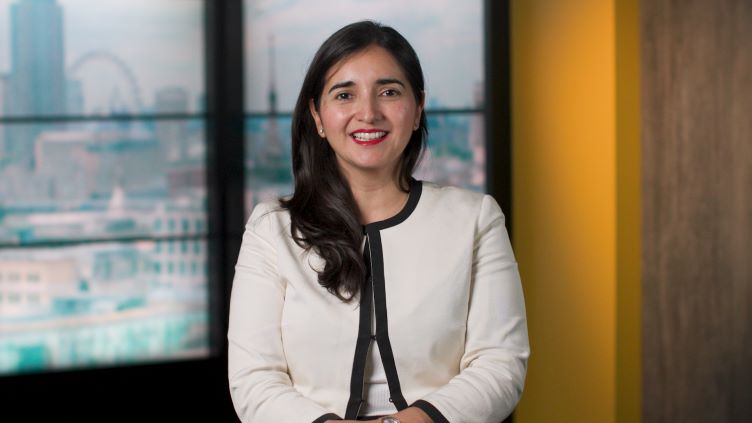 Now PlayingUp NextU.S. earnings key for our overweight - 1/27/2025
Now PlayingUp NextU.S. earnings key for our overweight - 1/27/2025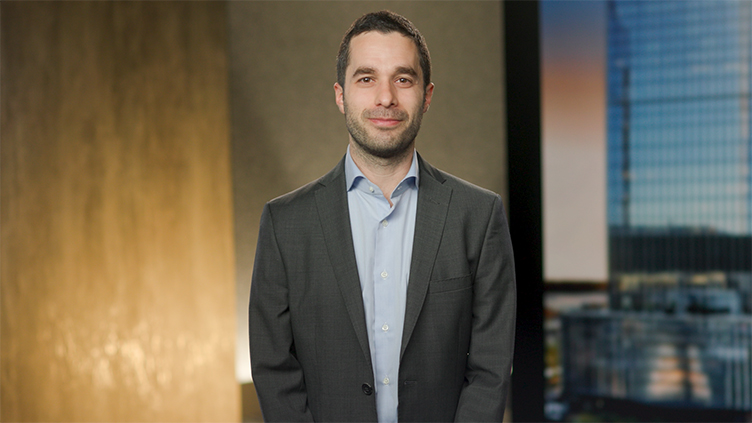 Now PlayingUp NextHigher-for-longer the new consensus - 1/21/2025
Now PlayingUp NextHigher-for-longer the new consensus - 1/21/2025 Now PlayingUp NextTriggers to change our pro-risk view - 1/13/2025
Now PlayingUp NextTriggers to change our pro-risk view - 1/13/2025 Now PlayingUp NextThree investment lessons from 2024 - 1/6/2025
Now PlayingUp NextThree investment lessons from 2024 - 1/6/2025 Now PlayingUp NextDiversifying our portfolio diversifiers - 12/16/2024
Now PlayingUp NextDiversifying our portfolio diversifiers - 12/16/2024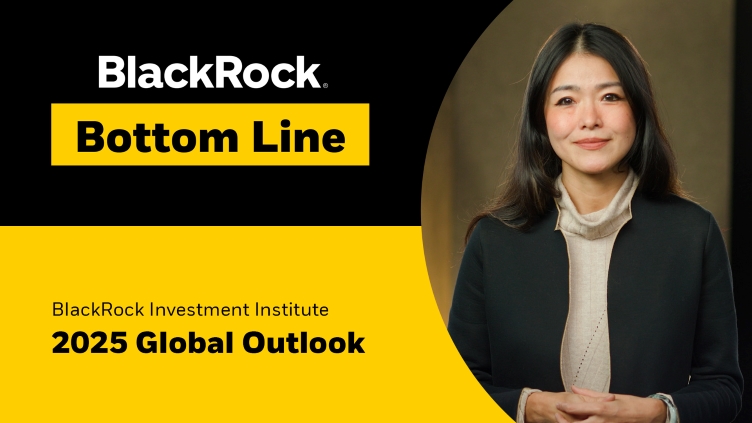 Now PlayingUp NextStaying pro-risk into 2025 - 12/09/2024
Now PlayingUp NextStaying pro-risk into 2025 - 12/09/2024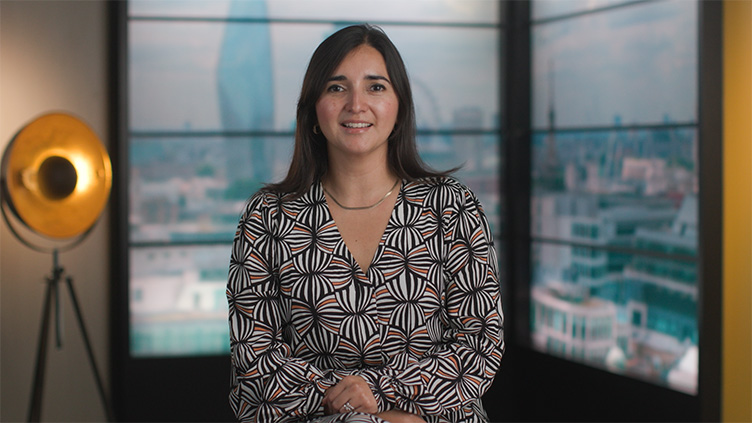 Now PlayingUp NextUneven earnings call for granularity - 12/02/2024
Now PlayingUp NextUneven earnings call for granularity - 12/02/2024 Now PlayingUp NextGetting active to identify AI winners - 11/25/2024
Now PlayingUp NextGetting active to identify AI winners - 11/25/2024 Now PlayingUp NextHigh-for-longer shapes strategic view - 11/18/2024
Now PlayingUp NextHigh-for-longer shapes strategic view - 11/18/2024 Now PlayingUp NextZeroing in on secular forces, not cycles - 11/11/2024
Now PlayingUp NextZeroing in on secular forces, not cycles - 11/11/2024 Now PlayingUp NextStructural forces playing out now - 11/4/2024
Now PlayingUp NextStructural forces playing out now - 11/4/2024 Now PlayingUp NextSeizing on fixed income swings - 10/28/2024
Now PlayingUp NextSeizing on fixed income swings - 10/28/2024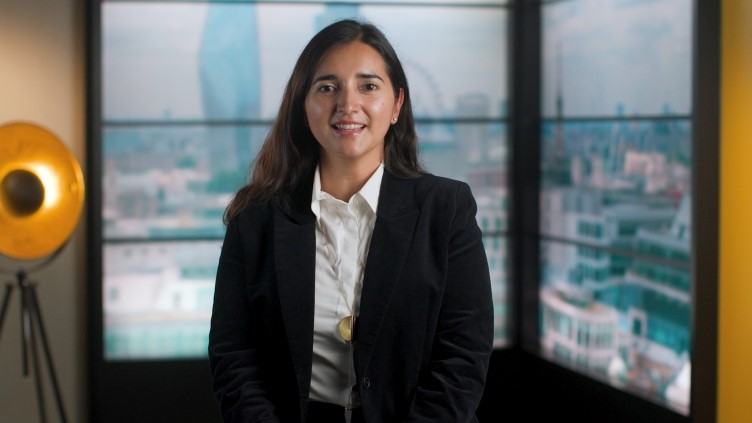 Now PlayingUp NextU.S. earnings strength stands out - 10/21/2024
Now PlayingUp NextU.S. earnings strength stands out - 10/21/2024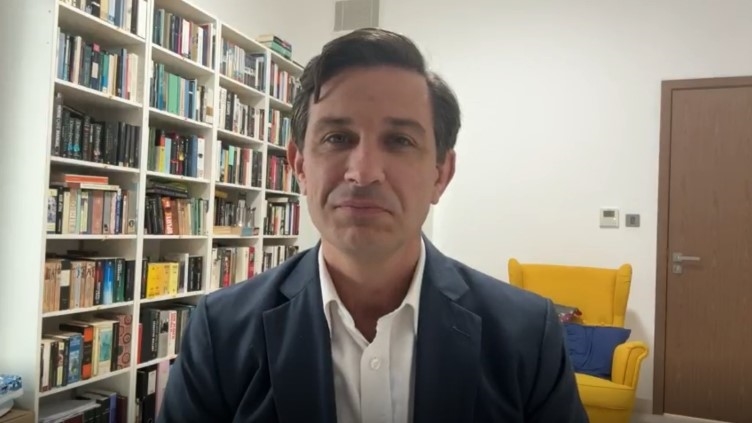 Now PlayingUp NextOur conviction in global stocks - 10/14/2024
Now PlayingUp NextOur conviction in global stocks - 10/14/2024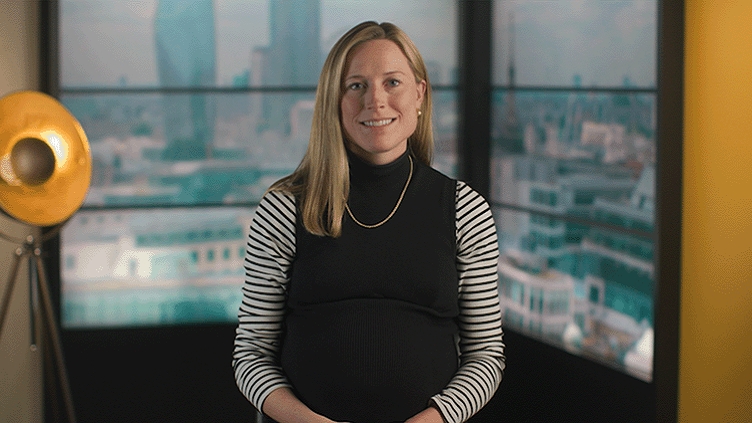 Now PlayingUp NextOur anchor in choppy markets - 10/07/2024
Now PlayingUp NextOur anchor in choppy markets - 10/07/2024 Now PlayingUp NextReal estate looks brighter after rate hit - 09/30/2024
Now PlayingUp NextReal estate looks brighter after rate hit - 09/30/2024 Now PlayingUp NextPolicy focus sharpens in U.S. election - 09/23/2024
Now PlayingUp NextPolicy focus sharpens in U.S. election - 09/23/2024 Now PlayingUp NextStarting the tight policy unwind - 09/16/2024
Now PlayingUp NextStarting the tight policy unwind - 09/16/2024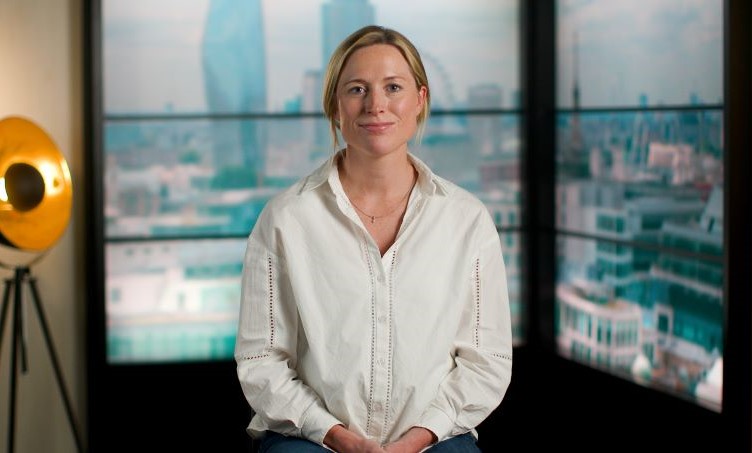 Now PlayingUp NextWhy U.S. equity gains can broaden - 09/09/2024
Now PlayingUp NextWhy U.S. equity gains can broaden - 09/09/2024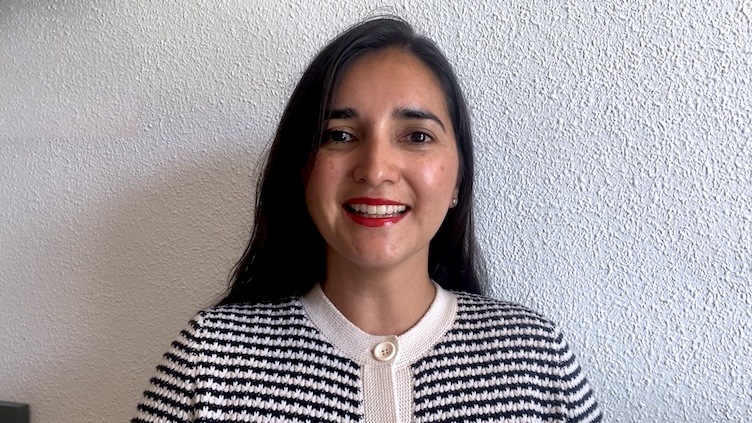 Now PlayingUp NextPatience needed in the AI buildout - 09/03/2024
Now PlayingUp NextPatience needed in the AI buildout - 09/03/2024 Now PlayingUp NextSticking with risk through turbulence - 08/12/2024
Now PlayingUp NextSticking with risk through turbulence - 08/12/2024 Now PlayingUp NextRate cuts don’t dull allure of income - 08/05/2024
Now PlayingUp NextRate cuts don’t dull allure of income - 08/05/2024 Now PlayingUp NextSteering through market air pockets - 07/29/2024
Now PlayingUp NextSteering through market air pockets - 07/29/2024- Now PlayingUp NextTech still likely to deliver on earnings - 07/22/2024
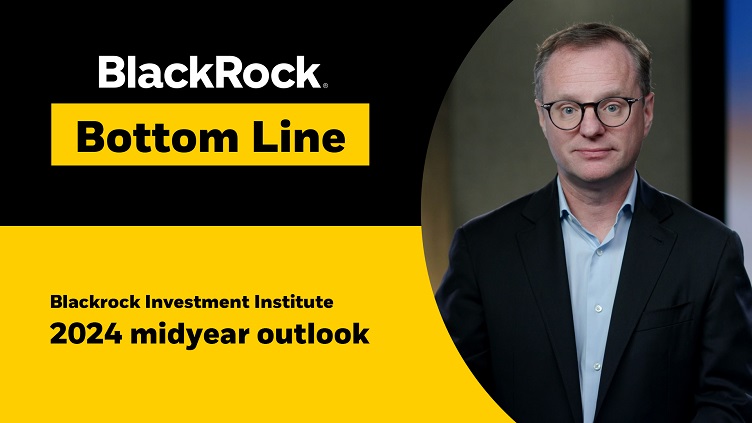 Now PlayingUp NextWhy we keep leaning into risk - 07/15/2024
Now PlayingUp NextWhy we keep leaning into risk - 07/15/2024 Now PlayingUp NextTaking a page out of the EM playbook - 07/08/2024
Now PlayingUp NextTaking a page out of the EM playbook - 07/08/2024 Now PlayingUp NextLeaning into income in fixed income - 07/01/2024
Now PlayingUp NextLeaning into income in fixed income - 07/01/2024
Market take
Weekly video_20250218
Chris Weber
Head of Climate Research, BlackRock Investment Institute
Opening frame: What’s driving markets? Market take
Camera frame
News of a seemingly more efficient artificial intelligence model interrupted a rally in some usually placid utility stocks last month. This shows how AI’s power and capital demands are now driving equity returns.
Title slide: AI a key driver of the power outlook
1: A driver of volatility
Markets recognizing the AI buildout’s huge power needs triggered a surge in AI-linked stocks last year, including utility stocks.
DeepSeek briefly challenged that trade in January as markets feared heavy investment in AI and estimates of its power needs may be overdone.
2: The demand for power
AI is set to be a key driver of new power demand as the mega-cap tech companies funding the AI buildout stick with or even increase their spending.
Other drivers of power demand include rising global incomes, reshoring, industrial growth and building cooling needs.
3: An evolving energy transition
Spiking power demand could add to the already huge investment expected in the energy transition and influence how the transition evolves, in our view.
In places like the U.S. where AI is a key driver of new power demand, we could see increased emphasis on natural gas and renewables.
Outro: Here’s our Market take
We see investment opportunities across power generation, grid infrastructure and the electrical equipment value chain. We like utilities and power producers.
Closing frame: Read details: blackrock.com/weekly-commentary
Opening (00:00)
This is Mark Peterson with the February 2025 BlackRock Student of the Market update.
Slide 2 (00:08)
This month, we’ll begin with a handful of slides on stocks and bonds, updates of some charts we’ve done in the past including markets concentration, money market assets and the real yield story on bonds then we’ll move on to correlation stock and bond correlation record highs. I think it’s one of the biggest stories out there. It’s higher than most folks realize, and then we’ll talk about how to diversify in the face of that challenge. Something that we’ve never seen this type of correlation between stocks and bonds in the history of investing. Where do you go to get that diversification and return?
Slide 3 (00:44)
Let’s begin with so goes January, so goes the year. This is the old market adage that January sets the tone for the rest of the year often a good signal and we were up 2.8% in January of this year. So certainly, a good sign, and you can see on the left side, really the last going back to 2009, all the various January starts and how the year finished up the next 11 months. You can see on the right side we just summarized it going back to 1926 and generally get off to a good start in January. You just have a positive January. The next 11 months, the average almost 13%, 12.8%. You can see the year finishes higher 80% of the time. So those are all better than the historical averages so the odds are definitely in your favor if you have a positive January and the opposite is true as well that if you have a negative January, you’ve got a 39% chance of finishing lower the rest of the year and an overall return averaging 7.6%. So you can see the difference. Of course, on the left, if we just bounce back to the left-hand side, you can see it doesn’t always work. You have periods like 2018. You got off to a great start in 2018, but you were down almost 10% the next 11 months. And in fact, if you look at most of the mid-2010’s, you started off a lot of those years in a negative hole but you finished off the year pretty strong. So thought that was interesting something we often see with the historic data that you have trends, but it doesn’t mean it works and pans out every year.
Slide 4 (02:20)
Moving on to market concentration, this is one we thought we’d update. This has been a big story as we all know in the market the last couple of years, just a handful of stocks driving all the return. That Magnificent Seven at the top, look what it did back in 2023. Those seven averaged over 111%. Last year, they did 60, so they had a nice rally to last couple months of the year and you can see the rest of the grouping eight through 20, 21 through 100 and the bottom 400 on the far right. Look at the eight through 20, they actually had a better year in 2024 so that gap shrunk a bunch. But as you move towards the right, you can see 21 through 100 was only up 21% which was lower than it was in 2023. Same thing with the bottom 400. So certainly, a trend that we’ve seen play out the gap shrunk last year. This year just for January and certainly January, one month is not a trend yet but the Mag Seven was actually the lowest performer. So we have seen the market broaden out a bit to start the year. I think, we’d all like to see that probably take hold here in 2025. We’d rather see more of the market participating in carrying some of the gains not just a handful of stocks in the market and the economy driving all the returns. That’s just not a healthy environment and certainly not sustainable forever. So something to keep an eye on. We’ll keep you updated on this one but I thought it was good to put some numbers on it from last year and where we kicked off 2025.
Slide 5 (03:56)
Moving on to money market assets, we all know they’re at historic peaks. Got some requests for this slide to update it. We’re almost at seven trillion at the end of December in money market fund assets. You can see where that was just a couple years ago during the pandemic peak was about 4.8 trillion. Actually, if you look, we probably should have put this number in here, back at the end of 2018, it was down to three trillion in money market assets back in 2018. So it’s more than doubled over the last six years which is pretty amazing when you think about it. Just haven’t seen this type of ramp-up in assets in money market funds in such a short period of time. On the right side, we have stock market performance at those various peaks. I’ve heard this was mentioned from several folks internally here at BlackRock that if you do get a period where money market or interest rates start to come down, which they have with the Fed lowering short-term interest rates, that maybe some of these dollars start to make their way back into portfolios whether that’s either on the stock or the bond side could be supportive of prices across portfolios, whether it’s the stock or the bond side. That’s certainly been the case historically. The one caveat I would throw out there, especially on the stock side is that the periods that you’re looking at, valuations were very different in the stock market so you think back the end of 2003 was the end of the tech bubble. So valuations were super cheap. You had three years in a row which stocks lost money. 2009, of course, was peak global financial crisis or the very bottom of that market so certainly fear and uncertainty was super high. Similar with May of 2020 with the pandemic but you did see assets come out shortly after that and you can see what stock returns were on the right. But again, very different valuation. World stocks are not nearly as cheap today. They’re in fact expensive. But we also know those valuations tend to be a bad predictor of performance in the short term. So, I thought this was a good update but I want to make sure, folks, keep in mind that each of these periods are different and unique and certainly the valuation story is different.
Slide 6 (06:12)
Moving on to real yields on bonds, this is something we’ve touched on quite a bit lately in Student of the Market when we talked to our fixed-income folks. This is something they’re highlighting that real yields on bonds are as attractive as they’ve been in probably a decade and we changed this one a little bit. We just looked at the five-year treasury so just moving down the yield curve a little bit, so shorter maturity and very similar story. It came down a little bit here in January but you can see real yields still over 1%, 1.4%, the highest it’s been since February of 2015. And you can see on the right side, we just defined this a little bit more precisely. You can see that returns for bonds really line up symmetrically, not perfectly of course, but line up symmetrically with where real yields start. So you buy real yields, the more attractive, those inflation-adjusted interest rates and income is, the better your return over the next 12 months for bonds and fixed income. I think that’s intuitive for a lot of bond investors, but I thought it was interesting to put some money numbers to it. You can see we’re right in between that 1% and 3%. Of course, you get above 3%, those are glorious returns for bonds up over 11% on the right. You buy bonds with real yields less than 1% of course a lot of those were negative here more recently obviously during the period from 2001 into 2021 into 2022 and ’23, the worst period ever for bond investing and it was all because real yields on bonds were deeply negative when we had that spike in inflation starting from a very low interest rate base.
Slide 7 (08:01)
Moving on to the correlation story, we’ve touched on this quite a bit in Student of the Market but you can see where the updated numbers are right near those historic highs just on the pure correlation number at 0.72 at the end of January, much higher than we’ve ever been historically again going back to 1926. This of course is the story where stocks and bonds move in tandem more so when that number is higher. So the fact that stocks and bonds are just moving together, they’re not zigging while the other one is zagging is certainly a challenge. We highlighted some of the four categories on the right that have produced some of the lowest correlations. So just looking at the mutual fund categories with the lowest correlation to stocks, on the right you can see systematic trend, very low correlation but not much return. We put the box in there because I think it’s one thing to talk about correlation but you can’t leave out the return part. Equity market neutrals, one, that’s done a really nice job delivering the second lowest correlation of any category but actually delivering some nice returns at 7.5% per year over the last three years. That’s the type of story we like to see diversification, no correlation with stocks but also delivering a return well above cash.
Slide 8 (09:18)
Diving a little bit deeper on the correlation story, we’ve highlighted this stat that’s gotten a lot of attention that the last 14 times stocks have lost money, bonds have lost money as well on a monthly basis. So you can see all the months, we had three months in 2024 where stocks lost money and you can see bonds were down as well. Even some of the months like October, bonds were down more than stocks which I think would surprise a lot of folks. So this is something that’s never happened to this degree in history. You can see on the right side that we took the longest streaks, monthly losing streaks, where stocks lost money, bonds were down as well. This goes again back to 1926. You can see 14 is by far the longest streak. The previous other longest streak was only six months in 1993 and 1994 and actually, if you combine March right in the middle there, March of 2020 and September of 2021, 19 of the last 20 months in which stocks lost money, bonds did as well. So again, the correlation numbers are high but when you look at it on this monthly basis, we’ve never seen anything close to this where stocks and bonds are moving in tandem to this degree really pushing on that diversification story. Bonds then struggled from return standpoint but the fact that they haven’t zig while stocks have zagged has made the overall portfolio even more challenging in this environment.
Slide 9 (10:51)
And of course, the solution continues to be some of those alternative pieces that we highlighted on the earlier slide. Here’s what they’ve done in those 14 months. Look at some of these alternative categories again, equity market neutral floating right to the top up 0.6% in those months, those 14 months where stocks and bonds have lost money. Certainly, that’s the type of diversification you’re hoping for in a portfolio. Some others multi-strategy global macro also on the positive side. To balance it out on the right, just wanted to show you that, hey, of course stocks and bonds when they do bounce back tend to be up more than some of these alternative strategies but I think it’s easy to see the diversification benefits. When you look at this slide, equity market neutral delivering nice returns even when stocks and bonds have been down in recent years.
Slide 10 (11:44)
Last slide just shows the longer-term view here on some of these categories in a high or low stock and bond correlation world. So just looking at the three-year rolling correlation data on stocks and bonds and dividing it really in half right around 0.5. So anything higher than 0.5, you can see that high correlation story alternatives have delivered their best performance and returns are much lower for these alternative strategies when correlations for stocks and bonds are lower. So what we’ve seen here recently pans out over longer periods of time when we get high correlations generally these alternative strategies have delivered better returns and part of the reason why that is, is that when cash is higher, these alternative strategies tend to benefit from higher cash positions and higher interest rates on cash and that results in better returns and that often happens in a high correlation world between stocks and bonds.
Slide 11 (12:45)
So, hopefully that was helpful. That does it for us for our February 2025 BlackRock Student of the Market update. As always, if you have thoughts or comments on content, you can submit that through our website. If you’d google BlackRock Student of the Market, you could submit those there. We appreciate that. As always, thank you for listening and we’ll see you next month on BlackRock’s Student of the Market update.
USRRMH0225U/S-4226140
Student of the Market: February 2025
BlackRock’s Student of the Market provides monthly insights on current and historical market trends. Share these key insights with your clients now.
Featured Webinars for Advisors
View a webinar replay where BlackRock's leaders discuss how advisors can navigate markets and build stronger relationships with clients.
Geopolitical developments and investment implications (October 2024)
00:00:02
CAROLYN BARNETTE: Hi everyone. I’m Carolyn Barnette, Head of Market and Portfolio Insights for US Wealth, here with a few key takeaways from our In the Know Webinar on our 2025 outlook.
00:00:12
So, look, first and foremost, I’d say we are very optimistic for the year, particularly on US Equities. We see a lot of room for growth there. You know, Alister Hibbert, the Portfolio Manager for our Unconstrained Equity Fund, said it’s always easier to sound smart when you’re sounding bearish and talking about all the risks, but we’re not seeing anything in markets right now to suggest that bearish view.
00:00:38
If anything, to think that valuations aren’t justified, you’d need to expect profit margins to come down, and again, not seeing any suggestions that that could happen. So, definitely staying overweight equities, overweight US equities in particular.
00:00:53
On the bond side, certainly seeing some risk to longer duration assets. You did see the Fed start their cutting cycle, but you also saw longer-term treasury yields rise as the Fed was lowering interest rates with the potential for persistent inflation, with the potential high deficits. We’re still concerned about the risks involved in long-dated treasuries, and so instead what we prefer to do is really build balance into our fixed income sleeves.
00:01:24
Part of that is leaning into shorter and intermediate dated core bonds on the high quality side, and part of that is also shifting more of our fixed income portfolios towards what we call plus sectors, which could be high yield bonds, but other bonds that are delivering a spread over treasuries like securitized debt where you can get higher yields with potentially less risk and also have a nice balancing effect for your high quality bonds.
00:01:50
Last piece I’ll leave you with is we’re really optimistic about private markets going forward. We think the return in premium could go up there. We’re seeing a lot of dry powder sitting on the sides, we’re seeing valuations that might not have yet adjusted the way public market equities have, and we’re certainly seeing lower financing costs, more demand for fundraising capital as well, making us really excited about that private market space.
00:02:17
So, you put that all together into a diversified portfolio, we are at our max, almost at our max overweight to equities within our model portfolios. They can go up to 5%. They’re sitting at +4% right now. So, that gives you a sense of how bullish we are and how overweight, but still building in as complements all of those other exposures as well.
00:02:40
We’re going to be doing these In the Know Webinars on a monthly basis going forward. The next one is going to be on February 20th at 2:00 Eastern. So, really excited for that as well. Hopefully we’ll see you there, and if not, have a wonderful January, and we’ll talk again soon.
In the Know recap: January 2025
Watch a recap of our latest In the Know event where our top thought leaders gathered to share their perspectives on the market and how they’re positioning portfolios for 2025.
Earn CE credits
We’re here to support you in growing your business. Explore our Continuing Education (CE) courses and actionable resources on today’s key topics.
Investments
Insights
Practice Management
Tools
Resources
About Us
- PRODUCTS
- ASSET CLASS
- BLACKROCK'S BEST IDEAS
- BUILD & EVALUATE PORTFOLIOS
- ENHANCE CLIENT CONVERSATIONS
- QUICK LINKS
BlackRock’s purpose is to help more and more people experience financial well-being. As a fiduciary to investors and a leading provider of financial technology, we help millions of people build savings that serve them throughout their lives by making investing easier and more affordable. For additional information on BlackRock, please visit our Corporate Website | Twitter | LinkedIn
Corporate
©2025 BlackRock, Inc. or its affiliates. All rights reserved.
You are now leaving BlackRock’s website
You are leaving BlackRock’s website and entering a third-party website that is not controlled, maintained, or monitored by BlackRock. BlackRock is not responsible for the content or availability of the third-party website. By leaving BlackRock’s website, you will be subject to the third-party website’s terms, policies and/or notices, including those related to privacy and security, as applicable. Please review such policies and notices on the third-party website.
Investing involves risk, including possible loss of principal.
This information should not be relied upon as research, investment advice, or a recommendation regarding any products, strategies, or any security in particular. This material is strictly for illustrative, educational, or informational purposes and is subject to change.
Carefully consider the Funds' investment objectives, risk factors, and charges and expenses before investing. This and other information can be found in the Funds' prospectuses or, if available, the summary prospectuses which may be obtained visiting the iShares ETF and BlackRock Mutual Fund prospectus pages. Read the prospectus carefully before investing.
Prepared by BlackRock Investments, LLC, member FINRA.
© 2025 BlackRock, Inc. or its affiliates. All Rights Reserved. BLACKROCK, BLACKROCK SOLUTIONS, BUILD ON BLACKROCK, ALADDIN, iSHARES, iBONDS, FACTORSELECT, iTHINKING, iSHARES CONNECT, FUND FRENZY, LIFEPATH, SO WHAT DO I DO WITH MY MONEY, INVESTING FOR A NEW WORLD, BUILT FOR THESE TIMES, the iShares Core Graphic, CoRI and the CoRI logo are trademarks of BlackRock, Inc. or its affiliates. All other trademarks are those of their respective owners.
USRRMH0125U/S-4155510
USRRMH0225U/S-4214890






